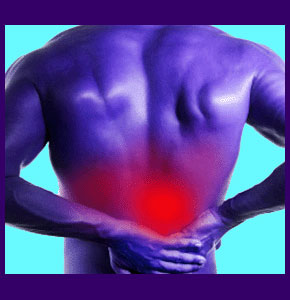
Back pain after exercise often occurs when a person is not acclimated to a new fitness activity, but can also occur in seasoned athletes, as well for different reasons. Exercise is great for the body and is an inherently part of living a healthy life. However, when pain occurs after exercise, it can make people question why they are working out only to suffer once the exertion is finished.
Exercise comes in many forms and can work the muscles and other soft tissues of the dorsal anatomy thoroughly. Exercise will build a strong back, as well as a healthy overall body. However, in some cases, exercise might be the very factor driving pain syndromes, occasionally resulting in chronic suffering that can threaten physical functionality. These circumstances must be dealt with before they result in serious consequences to the anatomy.
This dialog examines the different types of exercise-related back pain conditions. We will explore why people might experience back pain after exercise, as well as what can be done to stop the pain from occurring in the future.
Explanations for Back Pain After Exercise
Minor soreness after exercise is commonplace when performing unfamiliar fitness exercise that use new muscle groups from those which are accustomed to exercising. Additionally, similar symptoms are produced when muscles are worked strenuously or for endurance activities, since minor strain will result. These mild symptoms are nothing to fear and will go away all by themselves within a day or 2.
Muscles can become sore for several possible reasons, often acting together in cases of more moderate levels of pain:
Ischemia is a result of endurance work for a muscular tissue. The muscle becomes deprived of oxygen if worked hard for an extended timeframe. Results will include an accumulation of lactic acid and other waste chemicals that can not be metabolized quickly enough. This type of ischemia is similar is presentation, but not causation, to the variety more often seen in chronic pain sufferers and caused by mindbody interactions.
Muscular strain is the way that muscles become stronger and larger. However, by straining muscles, soreness will ensue, which is why fitness authorities all agree that muscles should be rested for a few days before being worked again. This is why body builders have very specific fitness routines in the gym in order to maximize muscle mass though purposeful strain, while limiting the possibility of more significant muscular trauma.
If pain is severe or longer lasting, then it might involve a completely different causative mechanism as detailed in the section below.
Types of Pain After Exercise
As noted above, most mild back pain after exercise is a result of either strain and/or oxygen deprivation. However, there are also atypical cases of post-exercise pain and some of these issues might be significant and warrant medical attention:
Exercise can cause a herniated disc, especially when the activity involves impact, lifting or the possibility of trauma. Most herniated discs are nonissues, despite the common perception of them as being pathological. However, some herniated discs can be truly problematic and might create transient or even permanent symptoms in select patients with extenuating circumstances.
Fracture of one or more vertebral bones can cause pain, although fractures are not always very symptomatic. Vertebral fractures come in many varieties and range from literally insignificant to utter threats to life and physical functionality. Fractures become substantially more significant when they compromise neurological function of the spinal nerves or spinal cord, or undermine structural stability of the vertebral column.
Whiplash is a specific type of neck strain which involves hyperextension and/or hyperflexion of the cervical spine. Symptoms are usually located in the upper back, in between the shoulders and into the neck. However, additional expressions might include lower back pain, sciatica and headaches, making whiplash a more diverse condition than it first appears to be.
Treatment for Back Pain After Exercise
For common back muscle strain, there is no treatment needed, as the passage of time will completely resolve the discomfort. If you want quicker relief, you can use a diversity of home treatment options to provide a quicker recovery, such as massage, heat, ice and even additional gentle exercise. It is not wise to utilize OTC or prescription medications for such minor back pain, nor is it advised to use alcohol to soothe the pain.
For more significant causes of back pain after exercise, you should seek diagnostic evaluation from a qualified medical professional. We recommend a sports medicine practitioner, a physical therapist or a Doctor of Physical Medicine. These types of caregivers have the most experience dealing with exercise-related pain conditions and will immediately recognize warning signs that might be inherent to more extreme forms of spinal or muscular trauma.





